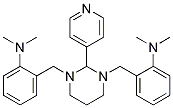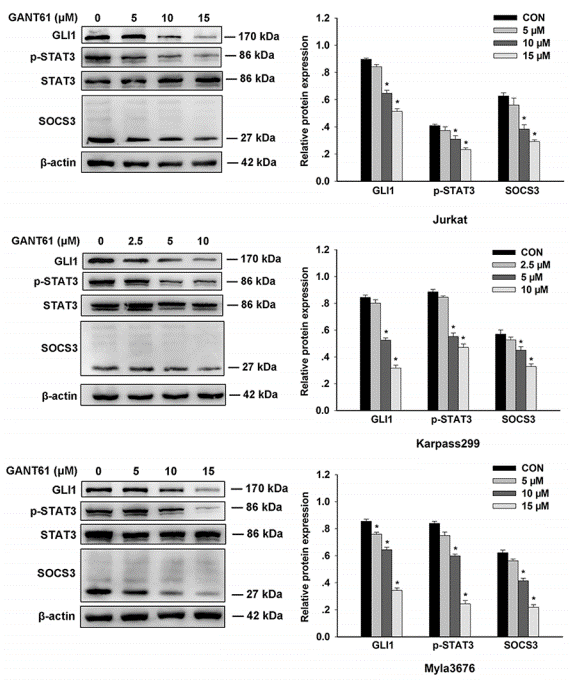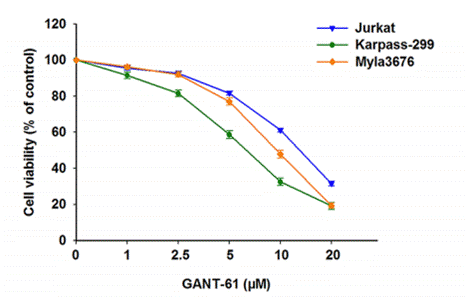
- Inhibitors
- By product type
- Natural Products
- Inducing Agents
- Peptides
- Antibiotics
- Antibody-drug Conjugates(ADC)
- PROTAC
- Hydrotropic Agents
- Dyes
- By Signaling Pathways
- PI3K/Akt/mTOR
- Epigenetics
- Methylation
- Immunology & Inflammation
- Protein Tyrosine Kinase
- Angiogenesis
- Apoptosis
- Autophagy
By research - Antibodies
- Compound Libraries
- Popular Compound Libraries
- Customize Library
- Clinical and FDA-approved Related
- Bioactive Compound Libraries
- Inhibitor Related
- Natural Product Related
- Metabolism Related
- Cell Death Related
- By Signaling Pathway
- By Disease
- Anti-infection and Antiviral Related
- Neuronal and Immunology Related
- Fragment and Covalent Related
- FDA-approved Drug Library
- FDA-approved & Passed Phase I Drug Library
- Preclinical/Clinical Compound Library
- Bioactive Compound Library-I
- Bioactive Compound Library-Ⅱ
- Kinase Inhibitor Library
- Express-Pick Library
- Natural Product Library
- Human Endogenous Metabolite Compound Library
- Alkaloid Compound LibraryNew
- Angiogenesis Related compound Library
- Anti-Aging Compound Library
- Anti-alzheimer Disease Compound Library
- Antibiotics compound Library
- Anti-cancer Compound Library
- Anti-cancer Compound Library-Ⅱ
- Anti-cancer Metabolism Compound Library
- Anti-Cardiovascular Disease Compound Library
- Anti-diabetic Compound Library
- Anti-infection Compound Library
- Antioxidant Compound Library
- Anti-parasitic Compound Library
- Antiviral Compound Library
- Apoptosis Compound Library
- Autophagy Compound Library
- Calcium Channel Blocker LibraryNew
- Cambridge Cancer Compound Library
- Carbohydrate Metabolism Compound LibraryNew
- Cell Cycle compound library
- CNS-Penetrant Compound Library
- Covalent Inhibitor Library
- Cytokine Inhibitor LibraryNew
- Cytoskeletal Signaling Pathway Compound Library
- DNA Damage/DNA Repair compound Library
- Drug-like Compound Library
- Endoplasmic Reticulum Stress Compound Library
- Epigenetics Compound Library
- Exosome Secretion Related Compound LibraryNew
- FDA-approved Anticancer Drug LibraryNew
- Ferroptosis Compound Library
- Flavonoid Compound Library
- Fragment Library
- Glutamine Metabolism Compound Library
- Glycolysis Compound Library
- GPCR Compound Library
- Gut Microbial Metabolite Library
- HIF-1 Signaling Pathway Compound Library
- Highly Selective Inhibitor Library
- Histone modification compound library
- HTS Library for Drug Discovery
- Human Hormone Related Compound LibraryNew
- Human Transcription Factor Compound LibraryNew
- Immunology/Inflammation Compound Library
- Inhibitor Library
- Ion Channel Ligand Library
- JAK/STAT compound library
- Lipid Metabolism Compound LibraryNew
- Macrocyclic Compound Library
- MAPK Inhibitor Library
- Medicine Food Homology Compound Library
- Metabolism Compound Library
- Methylation Compound Library
- Mouse Metabolite Compound LibraryNew
- Natural Organic Compound Library
- Neuronal Signaling Compound Library
- NF-κB Signaling Compound Library
- Nucleoside Analogue Library
- Obesity Compound Library
- Oxidative Stress Compound LibraryNew
- Plant Extract Library
- Phenotypic Screening Library
- PI3K/Akt Inhibitor Library
- Protease Inhibitor Library
- Protein-protein Interaction Inhibitor Library
- Pyroptosis Compound Library
- Small Molecule Immuno-Oncology Compound Library
- Mitochondria-Targeted Compound LibraryNew
- Stem Cell Differentiation Compound LibraryNew
- Stem Cell Signaling Compound Library
- Natural Phenol Compound LibraryNew
- Natural Terpenoid Compound LibraryNew
- TGF-beta/Smad compound library
- Traditional Chinese Medicine Library
- Tyrosine Kinase Inhibitor Library
- Ubiquitination Compound Library
-
Cherry Picking
You can personalize your library with chemicals from within Selleck's inventory. Build the right library for your research endeavors by choosing from compounds in all of our available libraries.
Please contact us at info@selleckchem.com to customize your library.
You could select:
- Bioreagents
- qPCR
- 2x SYBR Green qPCR Master Mix
- 2x SYBR Green qPCR Master Mix(Low ROX)
- 2x SYBR Green qPCR Master Mix(High ROX)
- Protein Assay
- Protein A/G Magnetic Beads for IP
- Anti-Flag magnetic beads
- Anti-Flag Affinity Gel
- Anti-Myc magnetic beads
- Anti-HA magnetic beads
- Poly DYKDDDDK Tag Peptide lyophilized powder
- Protease Inhibitor Cocktail
- Protease Inhibitor Cocktail (EDTA-Free, 100X in DMSO)
- Phosphatase Inhibitor Cocktail (2 Tubes, 100X)
- Cell Biology
- Cell Counting Kit-8 (CCK-8)
- Animal Experiment
- Mouse Direct PCR Kit (For Genotyping)
- Featured Products
- MRTX1133
- Nab-Paclitaxel
- KP-457
- IAG933
- RMC-6236 (Daraxonrasib)
- RMC-7977
- Zoldonrasib (RMC-9805)
- GsMTx4
- Navitoclax (ABT-263)
- TSA (Trichostatin A)
- Y-27632 Dihydrochloride
- SB431542
- SB202190
- MK-2206 Dihydrochloride
- LY294002
- Alisertib (MLN8237)
- XAV-939
- CHIR-99021 (Laduviglusib)
- Bafilomycin A1 (Baf-A1)
- Thiazovivin (TZV)
- CP-673451
- Verteporfin
- DAPT
- Galunisertib (LY2157299)
- MG132
- SBE-β-CD
- Tween 80
- Bavdegalutamide (ARV-110)
- Z-VAD-FMK
- Wnt-C59 (C59)
- IWR-1-endo
- (+)-JQ1
- 3-Deazaneplanocin A (DZNep) Hydrochloride
- RepSox (E-616452)
- Erastin
- Q-VD-Oph
- Puromycin Dihydrochloride
- Cycloheximide
- Telaglenastat (CB-839)
- A-83-01
- Ceralasertib (AZD6738)
- Liproxstatin-1
- Emricasan (IDN-6556)
- PMA (Phorbol 12-myristate 13-acetate)
- Dibutyryl cAMP (Bucladesine) sodium
- Nedisertib (M3814)
- PLX5622
- IKE (Imidazole Ketone Erastin)
- STM2457
- Saruparib (AZD5305)
- New Products
- Contact Us
research use only
GANT61 Hedgehog/Smoothened inhibitor
Cat.No.S8075

Chemical Structure
Molecular Weight: 429.6
Quality Control
Batch:
Purity:
99.91%
99.91
Cell Culture, Treatment & Working Concentration
| Cell Lines | Assay Type | Concentration | Incubation Time | Formulation | Activity Description | PMID |
|---|---|---|---|---|---|---|
| Shh Light2 | Function assay | Inhibition of SHH in mouse Shh Light2 cells by GLI-responsive firefly luciferase reporter gene assay, IC50 = 5 μM. | 19309080 | |||
| Shh-L2 | Function assay | Inhibition of Hedgehog signaling in human Shh-L2 cells, IC50 = 5 μM. | 17494766 | |||
| NIH 3T3 | Function assay | Inhibition of Hh signaling pathway in Shh-LIGHT2 incorporated mouse NIH 3T3 cells assessed as downregulation of Gli1 gene expression by luciferase reporter gene assay, EC50 = 5 μM. | 26976215 | |||
| HeLa | Function assay | 4.5 hrs | Inhibition of Ebolavirus glycoprotein/matrix protein VP40 entry in human HeLa cells after 4.5 hrs beta-lactamase reporter assay, IC50 = 6.83 μM. | 29624387 | ||
| TM3 | Function assay | 48 hrs | Inhibition of Hh signaling pathway in mouse TM3 cells assessed as downregulation of Gli1 gene expression after 48 hrs by luciferase reporter gene assay, EC50 = 9.27 μM. | 26976215 | ||
| Rh30 | Function assay | 24 hrs | Inhibition of human Gli1-mediated transcriptional activity in human Rh30 cells after 24 hrs by luciferase reporter gene assay, IC50 = 40 μM. | 20605720 | ||
| HEK293 | Function assay | Reduction of GLI2 mediated transcription in HEK293 cells by luciferase reporter assay | 17494766 | |||
| NIH3T3 | Function assay | Inhibition of GLI1 induced hedgehog signaling in mouse NIH3T3 cells | 17494766 | |||
| HEK293 | Function assay | Inhibition of beta galactosidase in HEK293 cells | 17494766 | |||
| MEF | Function assay | Reduction in expression of Hedgehog target gene Hip1 in Sufu deficient mouse MEF cells | 17494766 | |||
| NIH3T3 | Function assay | 10 uM | Inhibition of Hedgehog/Gli1 mediated transformation in mouse NIH3T3 cells at 10 uM | 17494766 | ||
| PANC1 | Function assay | 5 uM | Reduction in GLI1 expression in human PANC1 cells at 5 uM | 17494766 | ||
| PANC1 | Function assay | 5 uM | Reduction in PTCH expression in human PANC1 cells at 5 uM | 17494766 | ||
| 22Rv | Function assay | 5 uM | Reduction in GlI1 expression in human 22Rv cells at 5 uM | 17494766 | ||
| 22Rv | Function assay | 5 uM | Reduction in PTCH expression in human 22Rv cells at 5 uM | 17494766 | ||
| 22Rv | Function assay | Reduction of expression of PTCH mRNA in human 22Rv cells | 17494766 | |||
| HEK293 | Function assay | Inhibition of nuclear accumulation of GLI mutant in HEK293 cells | 17494766 | |||
| HEK293 | Function assay | Inhibition of nuclear accumulation of wild type GLI in HEK293 cells | 17494766 | |||
| HEK293 | Function assay | Reduction of GLI1 mediated transcription in HEK293 cells by luciferase reporter assay | 17494766 | |||
| 22Rv | Antitumor assay | 50 mg/kg | 18 days | Antitumor activity in GLI1 positive human 22Rv cells xenografted mouse model at 50 mg/kg, sc after 18 days | 17494766 | |
| HEK293 | Function assay | 30 uM | Inhibition of GLI (unknown origin) expressed in HEK293 cells assessed as reduction in GLI-mediated transcription at 30 uM | 25581017 | ||
| A673 | qHTS assay | qHTS of pediatric cancer cell lines to identify multiple opportunities for drug repurposing: Primary screen for A673 cells | 29435139 | |||
| SK-N-MC | qHTS assay | qHTS of pediatric cancer cell lines to identify multiple opportunities for drug repurposing: Primary screen for SK-N-MC cells | 29435139 | |||
| NB-EBc1 | qHTS assay | qHTS of pediatric cancer cell lines to identify multiple opportunities for drug repurposing: Primary screen for NB-EBc1 cells | 29435139 | |||
| OHS-50 | qHTS assay | qHTS of pediatric cancer cell lines to identify multiple opportunities for drug repurposing: Primary screen for OHS-50 cells | 29435139 | |||
| RD | qHTS assay | qHTS of pediatric cancer cell lines to identify multiple opportunities for drug repurposing: Primary screen for RD cells | 29435139 | |||
| SK-N-DZ | Cytotoxicity assay | 72 hrs | Cytotoxicity against human SK-N-DZ cells after 72 hrs by fluorometric microculture cytotoxicity assay, GI50 = 5.82 μM. | ChEMBL | ||
| SK-N-SH | Cytotoxicity assay | 72 hrs | Cytotoxicity against human SK-N-SH cells after 72 hrs by fluorometric microculture cytotoxicity assay, GI50 = 5.82 μM. | ChEMBL | ||
| SK-N-FI | Cytotoxicity assay | 72 hrs | Cytotoxicity against human SK-N-FI cells after 72 hrs by fluorometric microculture cytotoxicity assay, GI50 = 5.82 μM. | ChEMBL | ||
| SK-N-AS | Cytotoxicity assay | 72 hrs | Cytotoxicity against human SK-N-AS cells after 72 hrs by fluorometric microculture cytotoxicity assay, GI50 = 5.82 μM. | ChEMBL | ||
| IMR32 | Cytotoxicity assay | 72 hrs | Cytotoxicity against human IMR32 cells after 72 hrs by fluorometric microculture cytotoxicity assay, GI50 = 5.82 μM. | ChEMBL | ||
| SK-N-BE(2) | Cytotoxicity assay | 72 hrs | Cytotoxicity against human SK-N-BE(2) cells after 72 hrs by fluorometric microculture cytotoxicity assay, GI50 = 5.82 μM. | ChEMBL | ||
| SH-SY5Y | Cytotoxicity assay | 72 hrs | Cytotoxicity against human SH-SY5Y cells after 72 hrs by fluorometric microculture cytotoxicity assay, GI50 = 5.82 μM. | ChEMBL | ||
| Click to View More Cell Line Experimental Data | ||||||
Chemical Information, Storage & Stability
| Molecular Weight | 429.6 | Formula | C27H35N5 |
Storage (From the date of receipt) | |
|---|---|---|---|---|---|
| CAS No. | 500579-04-4 | Download SDF | Storage of Stock Solutions |
|
|
| Synonyms | NSC 136476 | Smiles | CN(C)C1=CC=CC=C1CN2CCCN(C2C3=CC=NC=C3)CC4=CC=CC=C4N(C)C | ||
Solubility
|
In vitro |
Ethanol : 85 mg/mL
DMSO
: Insoluble
Water : Insoluble |
Molarity Calculator
|
In vivo |
|||||
In vivo Formulation Calculator (Clear solution)
Step 1: Enter information below (Recommended: An additional animal making an allowance for loss during the experiment)
mg/kg
g
μL
Step 2: Enter the in vivo formulation (This is only the calculator, not formulation. Please contact us first if there is no in vivo formulation at the solubility Section.)
% DMSO
%
% Tween 80
% ddH2O
%DMSO
%
Calculation results:
Working concentration: mg/ml;
Method for preparing DMSO master liquid: mg drug pre-dissolved in μL DMSO ( Master liquid concentration mg/mL, Please contact us first if the concentration exceeds the DMSO solubility of the batch of drug. )
Method for preparing in vivo formulation: Take μL DMSO master liquid, next addμL PEG300, mix and clarify, next addμL Tween 80, mix and clarify, next add μL ddH2O, mix and clarify.
Method for preparing in vivo formulation: Take μL DMSO master liquid, next add μL Corn oil, mix and clarify.
Note: 1. Please make sure the liquid is clear before adding the next solvent.
2. Be sure to add the solvent(s) in order. You must ensure that the solution obtained, in the previous addition, is a clear solution before proceeding to add the next solvent. Physical methods such
as vortex, ultrasound or hot water bath can be used to aid dissolving.
Mechanism of Action
| Targets/IC50/Ki |
GLI1 [1]
(HEK293T cells expressing GLI1) 5 μM
|
|---|---|
| In vitro |
GANT61 is an inhibitor for GLI1 as well as GLI2-induced transcription. This compound inhibits the DNA binding ability of GLI1. It inhibits hedgehog signaling with IC50 of 5 μM, displays selectivity over other pathways, such as TNF signaling/NFκB activation, glucocorticoid receptor gene transactivation, and the Ras–Raf–Mek–Mapk cascade. This chemical efficiently inhibited in vitro tumor cell proliferation in a GLI-dependent manner. [1] It induces apoptosis in chronic lymphocytic leukemia cells (CLL), but not in normal B lymphocytes. [2] This compound induces robust cytotoxicity and abolishs the clonogenicity in human colon carcinoma cell lines. [3] It induces inhibition of DNA replication in early S-phase in human colon carcinoma cell lines, leading to DNA damage signaling involving an ATM–Chk2 axis and induction of cell death. [4] This chemical (30 μM) causes growth arrest and apoptosis in acute myeloid leukemia (AML) cells. [5]
|
| Kinase Assay |
Dual Luciferase Assay
|
|
HEK293 cells are transfected with GLI1 expression plasmid, together with the reporter plasmids 12×GliBSLuc and R-Luc on 10-cm plates (day 0). Twenty-four hours later, cells are seeded in white 96-well plates with clear bottom at a density of 15,000 cells per well. Cells are allowed to attach, and this compound is added at a final concentration of 10 μM in DMSO (0.5% final DMSO concentration) (day 1.5). Cells are grown for another 24 h, subsequently lysed, and then analyzed by using the Dual Luciferase kit.
|
|
| In vivo |
In nude mice injected with GLI1-positive 22Rv1 prostate cancer cells, GANT61 induces growth regression until no tumor is palpable. [1] In nude mice carrying SK-N-AS neuroblastoma xenografts, this compound treatment (oral gavage, 50 mg/kg) significantly inhibits tumor growth at Day 12 , as the tumor volume is reduced to 63% compared with controls. [6]
|
References |
|
Applications
| Methods | Biomarkers | Images | PMID |
|---|---|---|---|
| Western blot | GLI1 / p-STAT3 / STAT3 / SOCS3 GLI2 / Bcl-2 |

|
27275540 |
| Immunofluorescence | Gli2 |

|
24533083 |
| Growth inhibition assay | Cell viability |

|
27275540 |
Tech Support
Tel: +1-832-582-8158 Ext:3
If you have any other enquiries, please leave a message.






































